PC Engine build
-
@ruckage
It's a Pi3 with a Mausberry switch.
I'll definitely have a look at different SD cards to see if I can get the boot time down a few more seconds. -
I just made what I think will be the finalised Hucard design, it's come out pretty well. There is a slight bulge on the back of the card where the NFC label is placed under the rear hucard label but there isn't much I can do about that as the NFC label has to go somewhere.
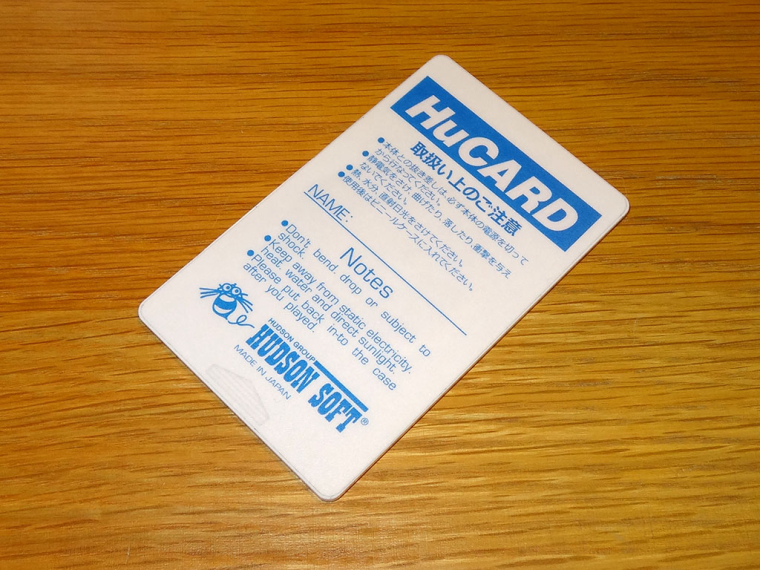
The art on the hucards will not be accurate in most cases, finding high quality scans of hucards is difficult and in many cases is just text which is a bit boring so I'm using the cover art as the hucard art. Also the artwork on real hucards varies in size as the pcb (the black area) varies depending on the game size. For mine I'm sticking to an artwork size that is as large as possible while still being fully visible when inserted into the console.
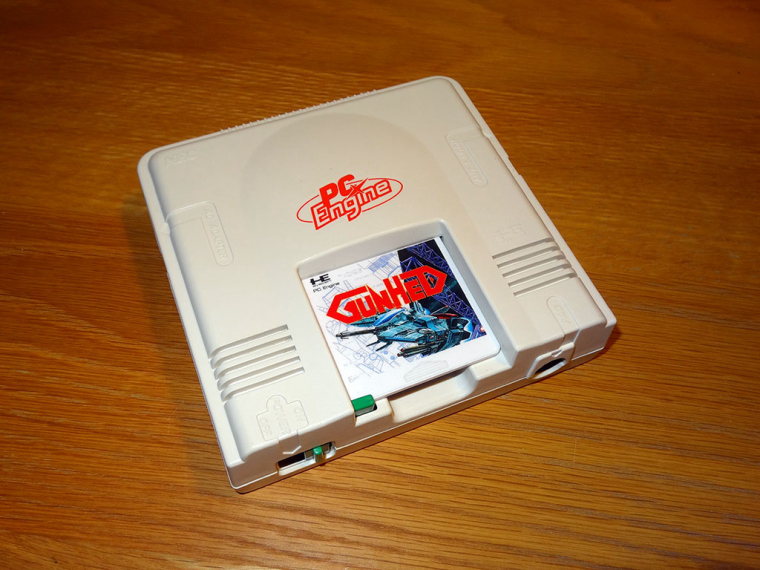
I'm also making cases for these complete with a custom made insert to really add the finishing touch, I'm really pleased with the way they look.
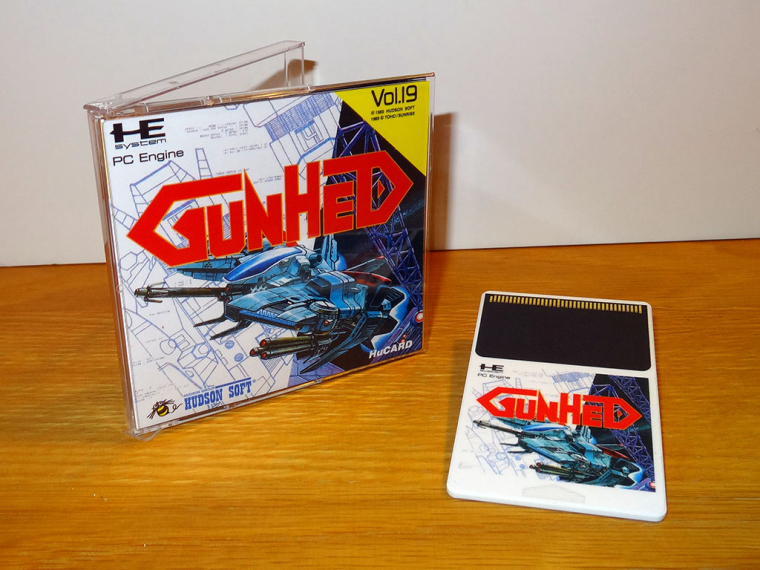
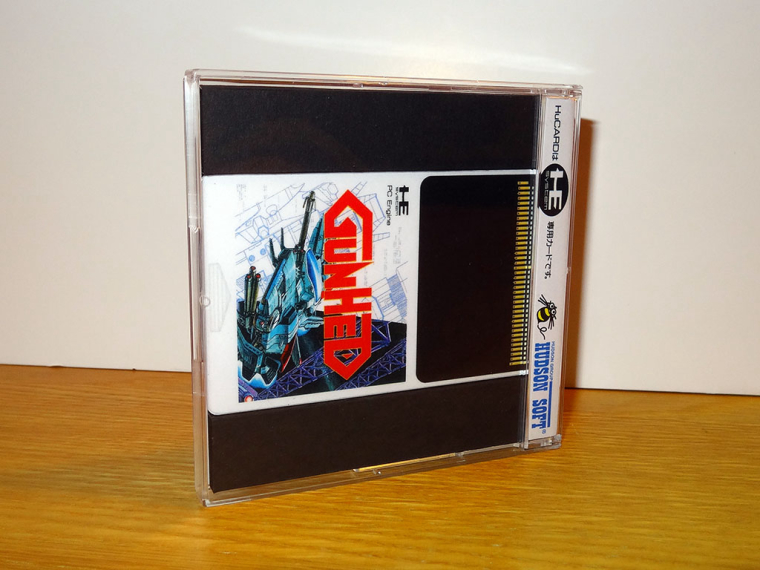
You can't see in the photos but at the top of the spine I have a colour coded genre similar to TurboGrafx 16 boxes, these I think will cover most games.
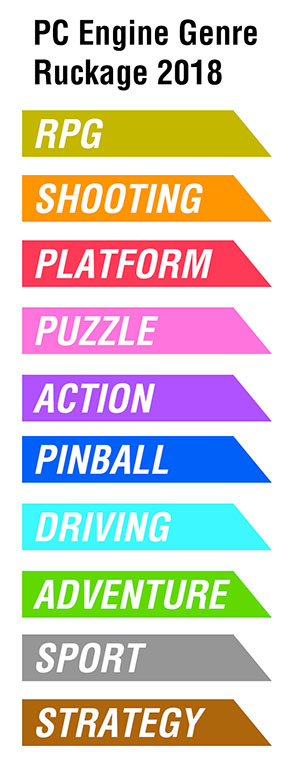
-
Funny you show this game. Just saw it yesterday at Hard Off for 12000 yen. So you just saved yourself a big amount of money.
A guy that I used to have contact in Yokohama owns the complete Shmups collection for PCEngine and some were REALLY expensive he said.
Still I don't understand how you gonna run these games without ES. Is there a different software you gonna use? Can you explain more details?
-
@flyingtomahawk Kinda going off memory here from the NESPI project. But what would happen is he would insert the "HuCard" into the slot and underneath would be the NFC reader. When he presses a button or toggle, the reader will read the rom on the NFC sticker, pass the rom along to RA which would load it in the proper emulator.
-
@flyingtomahawk said in PC Engine build:
Funny you show this game. Just saw it yesterday at Hard Off for 12000 yen. So you just saved your self a big amount of money.
A guy that I used to have contact in Yokohama owns the complete Shmups collection for PCEngine and some were REALLY expensive he said.
Still I don't understand how you gonna run these games without ES. Is there a different software you gonna use? Can you explain more details?
Yeah some of the games for PC engine are stupidly expensive, i'd never be able to afford most of the genuine hucards so It will be cool to have a collection with all those rare games (even if they are just pretend :D )
@lilbud is very close with how it works, mine is bit different to the nespi as everything happens automatically when the console is switched on.
I've modified autostart.sh and have removed emulationstation from it (this means that ES isn't launched) and in it's place I call a python script. The python script reads the nfc (using nfcpy library) which contains the rom name and launches the game using 'Runcommand' which is exactly the same way ES launches the games as well. -
~~So how do you get those games/roms into the hucards? Where did you get the python script from to let it read that game data and then run them?
I am not familiar with the NESPI build. So forgive me the questions.~~
Never mind. I'll just keep watching this build and see how it goes. I probably will never build anything close to it so no need to know everything behind it.
-
@flyingtomahawk Me too. PC Engine's that look like they were used as a doorstop are way too expensive and the nearmint ones are even more. I wanted to solder a microsd usb reader to a hucard's pins but that also might've been near impossible.
-
@flyingtomahawk said in PC Engine build:
~~So how do you get those games/roms into the hucards? Where did you get the python script from to let it read that game data and then run them?
There's a NES mini build with NFC support explained at http://www.daftmike.com/p/nespi-software-install-guide_30.html. The concept I think is the same - read the NFC card label and then execute a command on the Pi. Note that the game is not on the card, it's just the name of the game. The script reads the NFC label (name of the game), searches for the ROM file (on the Pi) and then executes
runcommandwith the proper parameters to start the emulator for the ROM name found on the NFC card.
The code used is published at https://github.com/imdaftmike/NESPi.git . -
@mitu
Now that makes sense.
So the the card is just a trigger to load the rom which is on the SD card. Cool stuff! -
@ruckage
Sorry to go again off-topic with the following question.I was looking at SD cards on amazon and they offer 2 types of SanDisk Ultras.
One is red/grey and says Class10 / A1 Sandisk microSDHC 98mb/S GB Ultra SD
They other is white/grey and says Class10 Sandisk microSDHC Ultra 80MB/s GB
Can the Pi read either one? -
Hi. Yes, both should work. A1 should technically be better I think (it's a new rating that I believe signifies good 4KB read/write performance which from my reading is important when it comes to the pi). My current card is A1 and works perfectly. Just make sure to buy directly from Amazon themselves as there are a lot of fake SD cards around.
Regarding your previous question, @mitu description is correct. Mine is slightly different to daftmikes as I don't have an arduino as a middleman reading the tags, instead I have it connected directly to the gpio and I'm using a python library to read the tags ndef data. To write the tags I'm just using my tablet and an app which i think is called nfctool. Daftmikes software is much more advanced than mine as it handles multiple systems and can also write the tags, I didn't need that so mine is quite simple.
I'd post a link to the tutorial I followed but the site doesn't seem to be working, there is a google cache of it though https://webcache.googleusercontent.com/search?q=cache:fPoZv3oSw_kJ:blog.digitaloctave.com/posts/hardware/nfc-module-v3-raspberry-pi/+&cd=1&hl=en&ct=clnk&gl=uk
My code is based on the sample from that tutorial, I'll post my code below though I'll probably tweak it some more before I'm finished, it could be simplified (particularly where it joins the strings to create the command) but I'm trying to keep it easily readable.
import subprocess import nfc import ndef from nfc.tag import tt1 from nfc.tag import tt2 from nfc.tag import tt3 from nfc.tag import tt4 tagtypes = ( ('uid', nfc.tag.tt1.Type1Tag), ('uid', nfc.tag.tt2.Type2Tag), ('idm', nfc.tag.tt3.Type3Tag), ('uid', nfc.tag.tt4.Type4Tag) ) with nfc.ContactlessFrontend('tty:S0:pn532') as clf: tag = clf.connect(rdwr={'on-connect': lambda tag: False}) record = tag.ndef.message[0] rom = nfc.ndef.TextRecord(record).text rom = rom + ".zip" path = "\"/home/pi/RetroPie/roms/pcengine/" command = "sudo /opt/retropie/supplementary/runcommand/runcommand.sh 0 _SYS_ pcengine " command=command+path+rom+"\"" subprocess.call(command, shell=True)Edit: Forgot to say, daftmike is a really nice helpful guy. I've sent him a few emails and he kindly pointed me in the right direction to buy an NFC reader after my fake one didn't work as expected.
-
Thanks a lot for explaining. Now things start to make sense.
Regarding my boot time, not sure why but I had a 16GB Class 4 SD card inside my Pi3. That might explain why I had slow loading times. I have a 32GB SanDisk Ultra Class 10 A1 coming my way now that should hopefully speed things up a bit.
-
@flyingtomahawk
You should definitely notice a difference going from a class 4 to class 10 SD card, will be interesting to see your boot times with the new card.The cable you're looking for is just called a 'micro sd extension cable'
I think this is the one I bought but they should be fairly easy to find on ebay/amazon as well.
https://shop.pimoroni.com/products/microsd-extension-cable -
Thank you.
I found the cable info in your SNES build right after I wrote here that is why I removed it.
Will order it now and see where to put it inside my Famicom. -
@flyingtomahawk
:D I hadn't even noticed you removed that from your message.
I can't think of anywhere obvious you could put the extension cable apart from maybe in the cartridge slot. I'll have to have a look at my famicom as I can't remember what ports it has and I'll likely use an extension cable as well when I do my famicom mod. -
Got my SanDisk Ultra Class10 A1 SD card today and slapped on my backup image file.
I did 10 boot ups and I get 9 seconds to boot video and 15 seconds to menu consistent. No ups or downs in boot time, always 9 and 15.
Maybe if I remove the splash video I can get the time lower but then all the fun is gone and I really like the splash video. -
@flyingtomahawk
That's a nice improvement. You might find that ES is already loaded a bit before that and the splash video is playing over the top of it. Could you try without the splash video to get an accurate boot time?What splash video are you using by the way?
-
Your splash video of course. :-D
Definitely an improvement. Thanks to you and this thread here I went from 23 boot video 29 menu to 9 boot video 15 menu.
If I disable the splash video I cut the time by 1 second. I rather wait 1 second and enjoy a nice splash video.And here an old video of mine. Look at that long boot time, terrible.
-
Yep, that's definitely a speed improvement.
Nice to see my splash videos being used. I was going to offer to shorten the splash video to match your boot time but to be honest that looks nice and seamless, pretty much identical to the boot on my super famicom which isn't surprising as it's using the same SD card and I designed the length of the video with that in mind.It's a shame that there is such a delay before splash videos start playing in Retropie, it would be nice to be able reduce that but I guess they play as early as is possible.
@herb_fargus A quick question, with plymouth boot screens do they start earlier in the boot process or is it comparable to splashvideos?
-
@ruckage said in PC Engine build:
do they start earlier in the boot process or is it comparable to splashvideos?
It's a little earlier but essentially negligible. You'd see a bit more of a difference on the pi 1. But even then it's just a matter of seconds.
Contributions to the project are always appreciated, so if you would like to support us with a donation you can do so here.
Hosting provided by Mythic-Beasts. See the Hosting Information page for more information.